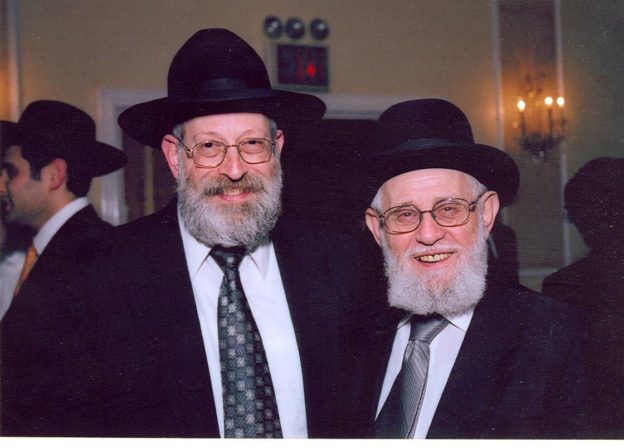One of the Covid-19 vaccines being studied has yielded encouraging results. That good news should yield us something too: a sense of awe at the accomplishment.
Earlier this week, the biotech company Moderna, which
partnered with the National Institutes of Health to develop the vaccine,
announced that results of a Phase 1 clinical trial showed that eight study
participants developed antibodies for the virus like those who have experienced
and survived the disease. And lab experiments with mice showed that the vaccine
prevented the virus from infecting cells.
The study hasn’t yet been peer reviewed, and Phase 2 trials,
which will involve several hundred subjects, are yet to come. But even the achievement
to date is impressive.
If our wonderment, however, is only at the amazing progress
toward, hopefully, a successful vaccine, we will have missed the truly awe-inspiring
story behind the story.
A vaccine, you likely know, works by stimulating immune
cells called lymphocytes to produce antibodies, specialized protein molecules
that counter the targeted antigen, or toxic invader, and thus prevent the
disease it could cause from taking hold.
Vaccines are made of dead or weakened antigens that can’t
cause an infection but nevertheless stimulate the immune system to produce the
necessary antibodies. Although with time, the produced antibodies will break
down, special “memory cells” remain in the body and, when the antigen is
encountered again, even years later, the memory cells can produce new
antibodies to fight it.
This happens within our bodies constantly.
According to the Centers for Disease Control and Prevention
(CDC), a healthy individual can produce millions of antibodies a day, fighting
infections so efficiently that people never even know they were exposed to an
antigen.
Last year, a team of scientists at Scripps Research
Institute in San Diego published results of their antibody research in the
respected journal Nature. Based on
their findings, they estimated that the human body has the potential to make a
quintillion — that’s one million trillion — unique antibodies.
Imagine for a moment if the workings of our immune systems
were suddenly made visible to us.
We would be struck dumb.
“If the stars should appear,” wrote Ralph Waldo Emerson,
only “one night in a thousand years, how would men believe and adore; and
preserve for many generations the remembrance of the city of G-d which had been
shown! But every night come out these envoys of beauty, and light the universe
with their admonishing smile.”
Our immune systems, like the stars, are usually and easily
taken for granted; their very ubiquity makes it hard to fully appreciate them. But
appreciating them is the privilege, indeed the duty, of every thinking,
sensitive person.
Returning to this week’s happy news. Is what really amazes
us the technological breakthrough that could lead to an effective vaccine? Or
is the true object of our astonishment and wonder the suddenly focused-upon
workings of our biological processes?
Once upon a time, after all, heart transplants, too, were
flabbergasting. But, at least to thoughtful people, they were never remotely as
amazing as hearts.
Back in 1996, a sheep named Dolly was successfully cloned,
the first such triumph. I recall the admiration, wonder and dread that the
accomplishment evoked around the world.
What exactly had scientists done? They had managed to
transfer a cell from the mammary gland of an adult sheep into another sheep’s
unfertilized egg cell whose nucleus had been removed; and the egg cell was then
stimulated to develop, and eventually implanted in the womb of yet a third
sheep, which bore Dolly.
I recall thinking at the time that, impressive as the
experiment was, all that had essentially been achieved was the coaxing of
already existent genetic material to do precisely what it does, well, all the
time. The achievement of producing Dolly bas
Dolly was, to be sure, a major one; myriad obstacles had to be overcome, and a
single set of chromosomes, rather than the usual pair from two parents, had to
be convinced to do the job.
But, still and all, other than the unusual means of bringing
it about, what was witnessed was a natural process that takes place millions of
times in millions of species each and every day without capturing anyone’s
attention. A natural process that was, like all natural processes in the end, a
miracle — no less one for its ubiquity.
Likewise, with all due recognition of the great and
praiseworthy efforts to create an effective vaccine for Covid-19, may they be
successful, what happened this week was, in the end, a cajoling of immune
systems to do… what immune systems do billions of times daily.
So our proper appreciation of the scientific knowledge we
have today, and our gratitude to the scientists that used that knowledge to
advance the drive for an effective vaccine should be joined by — indeed,
overwhelmed by — our ultimate awe for the immune systems with which our
Creator endowed us.
Whether it’s manipulating the creation of a sheep fetus or
of an immune response, the true marvel lies not in the manipulation but in the
manipulated, in the myriad miracles Hashem implanted in the world He created.
© 2020 Rabbi Avi
Shafran









